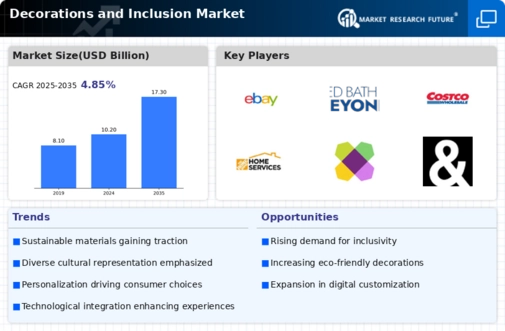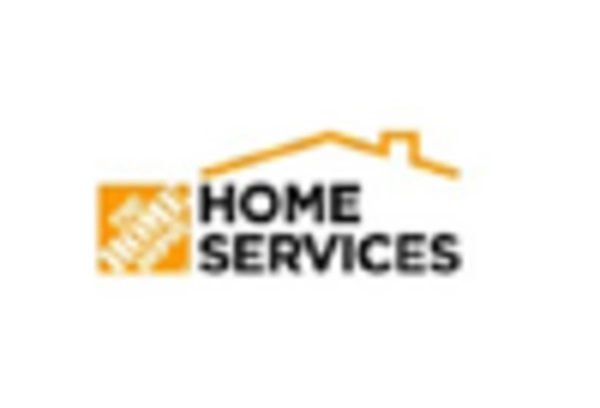Cultural Inclusivity in Design
Cultural representation and inclusivity are becoming increasingly significant in the Decorations and Inclusion Market. As societies become more diverse, there is a growing demand for decorations that reflect various cultural heritages and traditions. This trend is evident in the rise of multicultural design elements in home decor and event planning. Market Research Future indicates that products featuring diverse cultural motifs are gaining popularity, with a potential market growth of 15% in the next few years. Companies that embrace cultural inclusivity in their designs are likely to resonate with a broader audience, thereby enhancing their market presence in the Decorations and Inclusion Market.
Rise of Eco-Friendly Materials
Sustainability has emerged as a pivotal driver in the Decorations and Inclusion Market. The increasing awareness of environmental issues has led consumers to favor eco-friendly materials in their decoration choices. This shift is reflected in the growing market for biodegradable and recyclable products, which is projected to expand by 25% over the next five years. Businesses that adopt sustainable practices not only meet consumer expectations but also enhance their brand image. Consequently, the integration of eco-friendly materials into decoration products is likely to become a standard practice, influencing purchasing decisions and shaping the future of the Decorations and Inclusion Market.
Growing Demand for Personalization
The Decorations and Inclusion Market is witnessing a pronounced shift towards personalization. Consumers increasingly seek unique and tailored decoration solutions that reflect their individual identities and cultural backgrounds. This trend is particularly evident in home decor, event planning, and corporate branding, where personalized decorations enhance emotional connections. Market data indicates that approximately 60% of consumers express a preference for customized products, suggesting a robust opportunity for businesses to cater to this demand. As a result, companies that prioritize personalization in their offerings are likely to gain a competitive edge, fostering customer loyalty and driving sales in the Decorations and Inclusion Market.
Increased Focus on Mental Well-Being
The connection between environment and mental well-being is increasingly recognized, influencing the Decorations and Inclusion Market. Consumers are more aware of how their surroundings impact their mood and mental health, leading to a demand for decorations that promote tranquility and positivity. This trend is reflected in the growing popularity of calming color palettes and nature-inspired designs. Market data suggests that products aimed at enhancing mental well-being could see a growth rate of 20% over the next few years. As businesses respond to this demand, they are likely to create offerings that not only beautify spaces but also contribute to the overall well-being of consumers in the Decorations and Inclusion Market.
Technological Advancements in Decoration
Technological innovation plays a crucial role in shaping the Decorations and Inclusion Market. The advent of augmented reality (AR) and virtual reality (VR) technologies has transformed how consumers visualize and select decorations. These technologies allow customers to experience products in a virtual space before making a purchase, thereby enhancing the decision-making process. Market analysis suggests that the adoption of AR and VR in the decoration sector could increase consumer engagement by up to 40%. As businesses leverage these technologies, they are likely to attract a tech-savvy demographic, ultimately driving growth in the Decorations and Inclusion Market.


















Leave a Comment